Climbing a via ferrata in Corsica: where rugged mountain adventure meets the Mediterranean
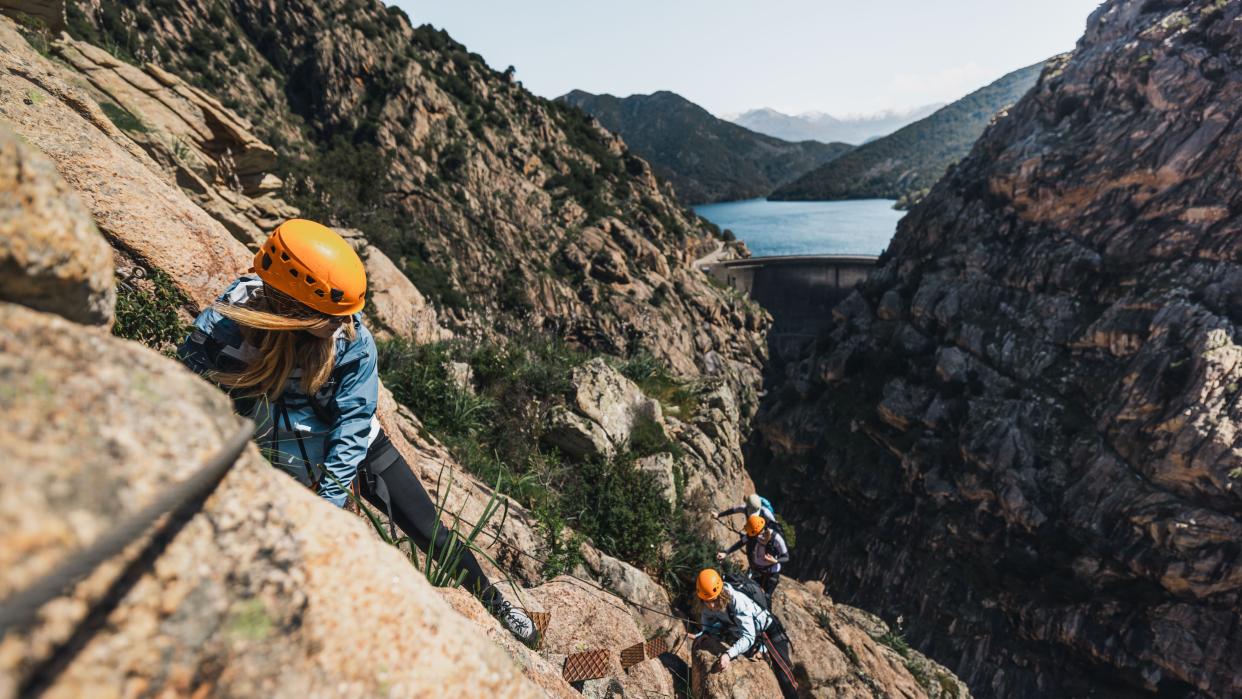
“I think I found the spicy part!”
I'm yelling to the climber behind me as I find myself stretched out around a rocky protrusion, my hands clinging to iron rungs on either side of the granite nose while I perch on tip toes in my hiking boots on small metal ledges. I wait here a minute, arms burning, for the climber ahead to make his next move so I can move on to find a more comfortable perch.
Below me, the cliff drops away to a distant gorge floor some two thousand feet down, and while I have butterflies in my stomach, I’m grinning widely. I’m well secured, via two carabiners that extend from quickdraws on my climbing harness to a metal cable that is bolted into the rock. Rather than the trad climbing I’ve been doing for years back in the Rockies, where one wrong placement of gear can mean a long, lonely fall, this is a via ferrata; in other words, a way to enjoy the thrills and exposure of technical rock climbing without quite so much risk. In fact, the risk is so low there may even have been a glass of rosé earlier at lunch.
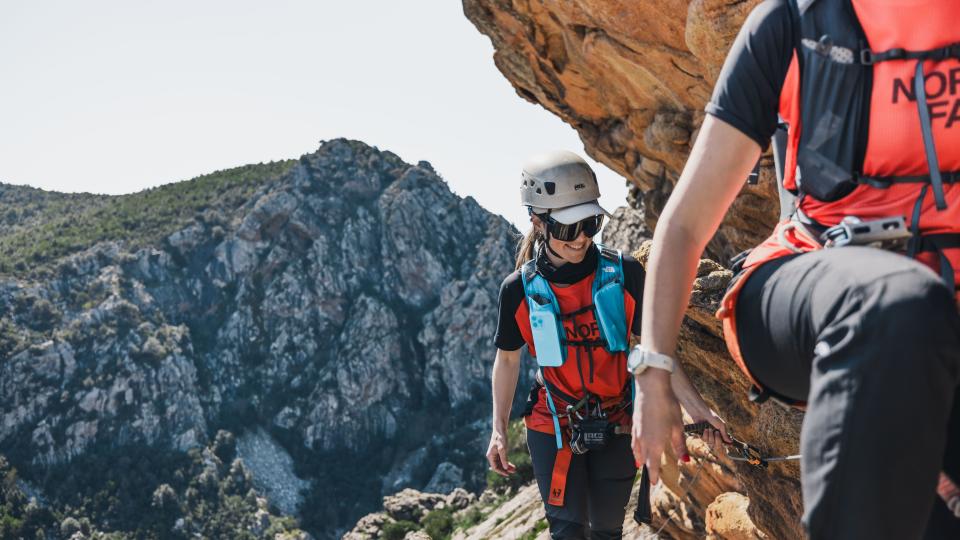
The via ferrata de Tolla is one of several such routes here in Corsica, the mountainous island neighbor to Sardinia in the Mediterranean that lies some 150 miles southeast of Nice. After a half hour or so of rocky but easy descent, we traveled across a gorge via a lengthy and exhilarating zipline ride and are now about halfway through a 90-minute climb back to the trailhead. When I look over my right shoulder, I’m treated to views of the stunning Lac de Tolla and its impressive hydroelectric dam. To my left, the sparkling Mediterranean beckons between the mountain peaks. In just about every way, the moment perfectly sums up the promise of Corsica, where rugged adventure meets a laidback beach vibe.
I arrived on the island the day before for a press trip with The North Face, by way of a stopover in Amsterdam and another in Nice. Upon arriving at my beachfront hotel, I washed away the funk of air travel with a dip in the sea, which even this early in the season was welcoming. In the afternoon, we drove around the bay to Ajaccio, the island’s capital, where we discovered all the hallmarks of Mediterranean vacations – pastel tones, whitewashed seafront hotels, bustling cafes, swaying palm trees and sun-drenched promenades.

The city has historical significance as well as sandy beaches – it’s the birthplace of Napoleon. However, we opt for the hiking trail over the museum, finding a path where luscious cacti hang heavy over the trail and red sandstone rock formations make tempting diversions for nimble climbers. As we climb to a rocky outcrop with views of the town, local trail runners pass us in scores, getting their evening workout in before dinner.
After a nine-kilometer circuit to stretch our legs, we head to a cozy restaurant in the port, where an open fire crackles against the cool spring weather and friendly waiters ply us with zesty local wines, buttery St Peter’s fish served simply with tomatoes and zucchini and gooey chocolate fondant. Though everyone is speaking French, the easygoing mood has more than a hint of Italian influence; we are, after all, closer to Italy than France and it shows.
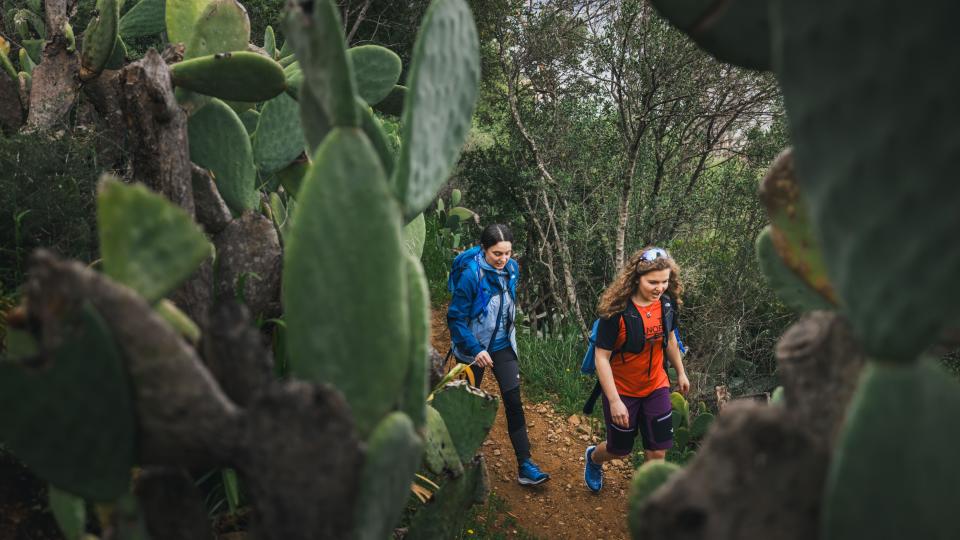
In the morning, we hit the road again, but this time turn inland away from the colorful coastal towns. Within minutes, we’re climbing on a steep, winding mountain road, passing crumbing famhouses. The classic Mediterranean beach vibe falls away, in its place, a decidedly verdant landscape emerges, one where lush forests adorn sawtooth mountain ridges.
Corsica is home to more than 600 miles of coastline and 200 beaches, but to come here and simply sunbathe would be a crime, for Corsica is a land of epic adventure. It holds the title of the most Mountainous island in the Med, with its tallest peak, Monte Cinto, standing well above Mount Washington and Ben Nevis at an impressive 8,878 ft. The most intrepid foot travelers can cross these mountains via the GR20, a 112-mile hiking trail that’s widely considered to be the toughest long-distance trail in Europe.
Adventure in Corsica
Getting there: There are four small airports on the island. We flew to Nice then continued onwards to Ajaccio Napoléon Bonaparte Airport via a 50 minute flight on Air Corsica. From the airport, a 15-minute taxi ride had us at our hotel.
Accommodations: The Radisson Blu Resort & Spa is a cool and airy resort just over the road from Agosta Beach, with an infinity pool, spa and three restaurants.
Where to eat: Tucked away just off Quai Napoloeon in Ajaccio, A Calata offers a breezy terrace in the summer and a cozy retreat in cold weather, dishing up unpretentious but excellent Corsican seafood and meat with friendly service.
Nearly two-thirds of the island is made up of mountains formed of granite 250 million years ago and today, some 40 percent of Corsica is given over to stunning Corsica Regional Nature Park. In the winter months, the lifts turn at three ski resorts and as we arrive, we can see a light dusting of new, late-season snow that fell overnight.
We choose mountain bikes over skis, but not before a fine al fresco breakfast of sharp Corsican sheep’s cheese, crusty bread and ripe tomatoes by the pristine lake. Bellies full, we hit a wide but rutted-out trail, cruising over rolling hills with breathtaking views, at one point stopping to remove our shoes and cross a rushing river, our bikes on our backs.
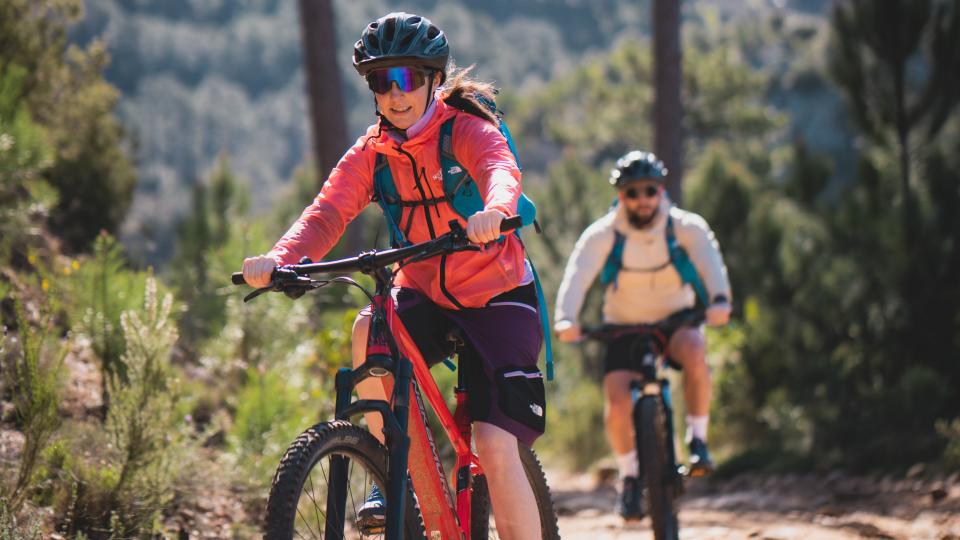
Afterwards, we cool off with a breathtakingly icy dip in the lake and lunch before it’s time to take on the via ferrata. It’s my first time on such a route and though I’m initially skeptical that such a secure climbing experience can really be fun, I’m soon completely taken with this intoxicating activity, which offers thrill and challenge even to experienced climbers.
By late afternoon, hot and happy, we’re back at the hotel and it’s time for another long dip in the sea before dinner. Falling into bed with the sound of the waves lulling me to sleep, hard to believe we’ve fit so much into just 36 hours. But that’s the beauty of Corsica – the island where you can sail, bike, hike and climb all in a single day.
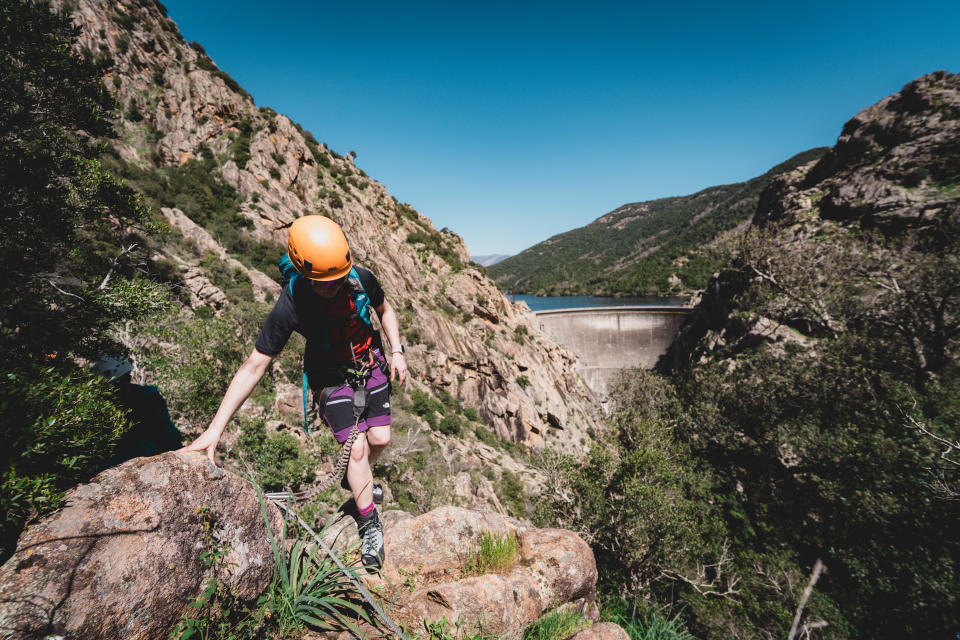
What to pack for an adventure in Corsica
We visited Corsica in early April, when temperatures ranged from cool to warm, and extra layers were necessary at times, but go here in the summer and you'll experience warmer weather with daytime highs in the upper 80s and low 70s. A sea breeze keeps things from getting too hot, and the weather year-round supports adventures of all kinds.
Here's what I wore for hiking, biking and a via ferrata in Corsica:
Hiking boots: The North Face Verto Gore-Tex Alpine Mid Boots
T-shirt: The North Face Trailjammer T-shirt
Fleece mid layer: The North Face Bolt Polartec Power Grid Pull-On Jacket
Windbreaker jacket: The North Face Windstream Shell Jacket